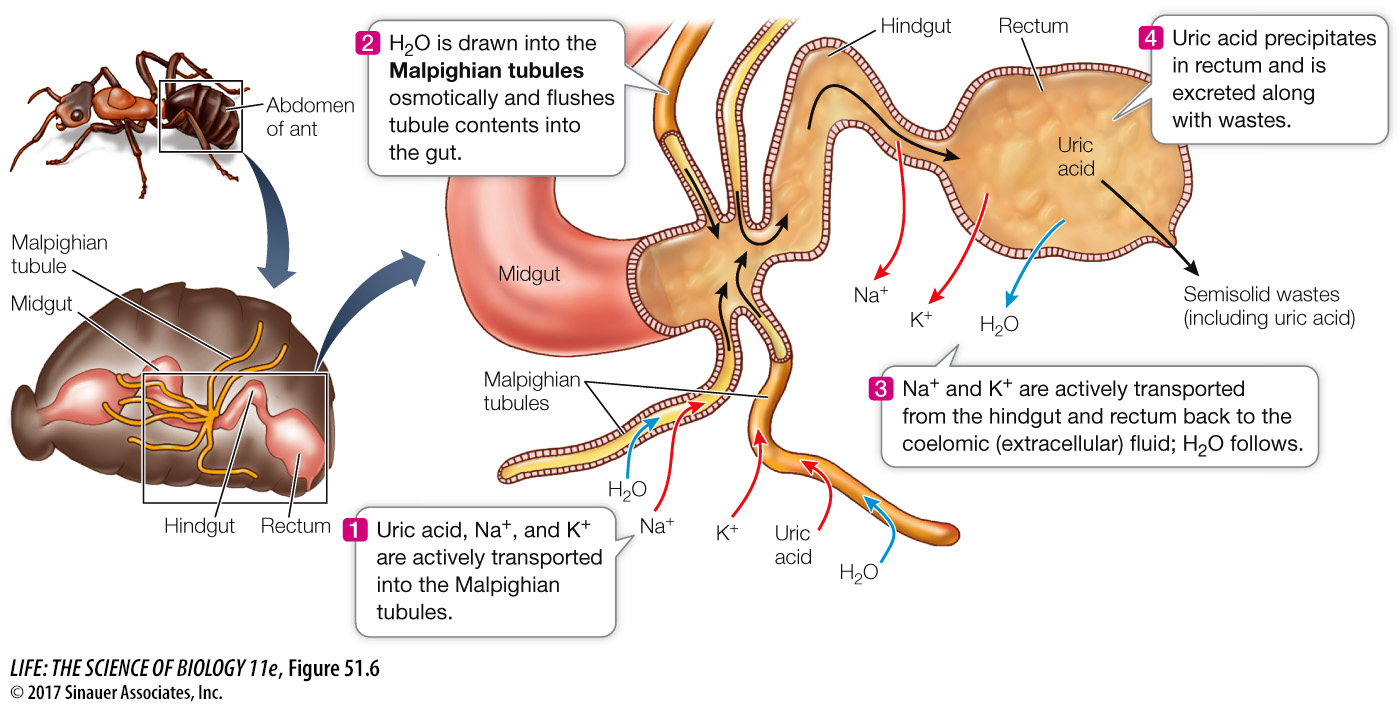Malpighian tubules of insects use active transport to excrete wastes
Insects can excrete nitrogenous wastes with very little loss of water and can therefore live in the driest habitats on Earth. The insect excretory system consists of Malpighian tubules. An individual insect has from 2 to more than 100 of these blind-

Question
Q: Why are Na+ and K+ ions transported into the Malpighian tubule but then transported out of the hindgut and rectum?
Na+ and K+ are transported into the Malpighian tubule so that water follows and flushes the contents of the tubule into the gut. They are transported out of the hindgut and rectum to create a concentration gradient for osmotic reabsorption of water from the gut, made possible by the precipitation of uric acid.
Insects have an open circulatory system and therefore cannot use a pressure difference to filter extracellular fluids into the Malpighian tubules. Instead, the cells of the tubules actively transport uric acid, potassium ions, and sodium ions from the extracellular fluid into the tubules. The high concentration of solutes in the tubules causes water to follow osmotically, which flushes the tubule contents toward the gut.
The epithelial cells of the hindgut and rectum actively transport sodium and potassium ions from the gut contents back into the extracellular fluid. This local transport of salts creates an osmotic gradient that pulls water out of the rectal contents. As its concentration increases, the uric acid forms a colloidal suspension, freeing even more water to be reabsorbed. Remaining in the rectum is the uric acid mixed with other wastes; this semisolid matter is what the insect excretes. If you ever park your car under a tree being visited by bees, you will find the little excretory droplets from the bees all over the car. The Malpighian tubule system is a highly effective mechanism for excreting nitrogenous wastes and some salts without giving up much water.